search
date/time
 | North East Post Weekend Edition |

Andrew Palmer
Group Editor
12:00 AM 25th October 2025
lifestyle
Fine Dining - Etz: A Metamorphosis In The Making
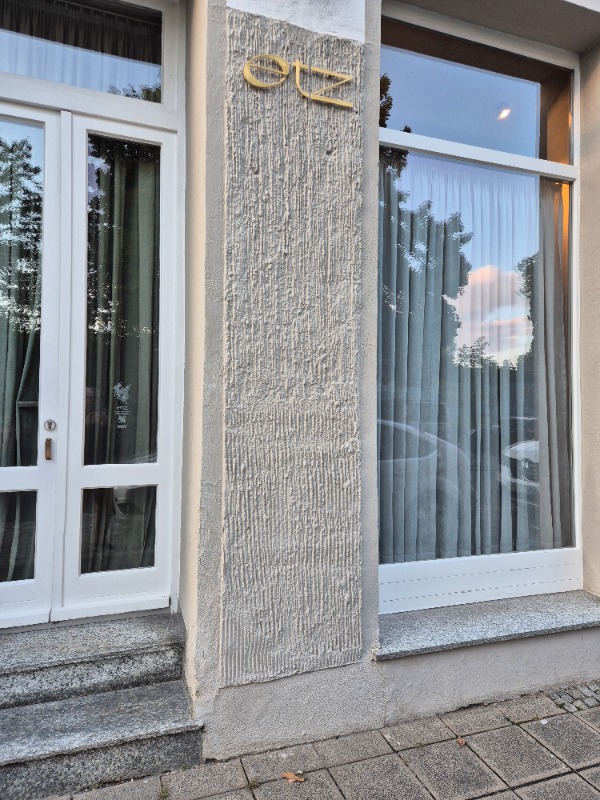
I was fortunate to secure a place at one of Etz's Metamorphosis Evenings during a visit to the city. The journey began with a metro ride out to the suburbs, followed by a somewhat circuitous search for the restaurant, which lies tucked away in a courtyard off Kirschgartenstraße 6. Only by following a trail of fellow diners through an archway did I finally locate the entrance—a suitably mysterious prelude to what promised to be an extraordinary evening.
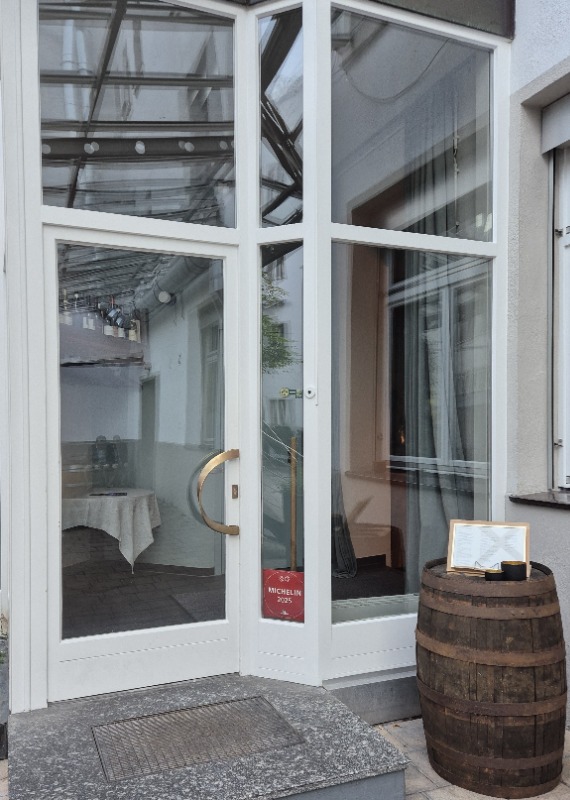
Like any compelling narrative, the magic begins with a prologue. Guests are ushered into the Aroma Library for an introduction to the philosophy underpinning the concept. Here, one can explore Schneider's laboratory—a shrine to the cornerstone techniques that define his menus: fermentation, drying, extraction, and maturation. We're offered a glass of Japanese quince water as we wander amongst the shelves, lined with bottles and jars that immediately spark a renewed fascination with food and our relationship to it.
Schneider's aim, as he explains at length, is to capture, concentrate, and reimagine hundreds of flavours. His treatise covers fermentation techniques and special refinement processes that lead to what he calls 'a surprising metamorphosis'. It's a fascinating exploration of how aromas transform through nature and intervention, prompting us to reconsider what will eventually arrive on our plates.
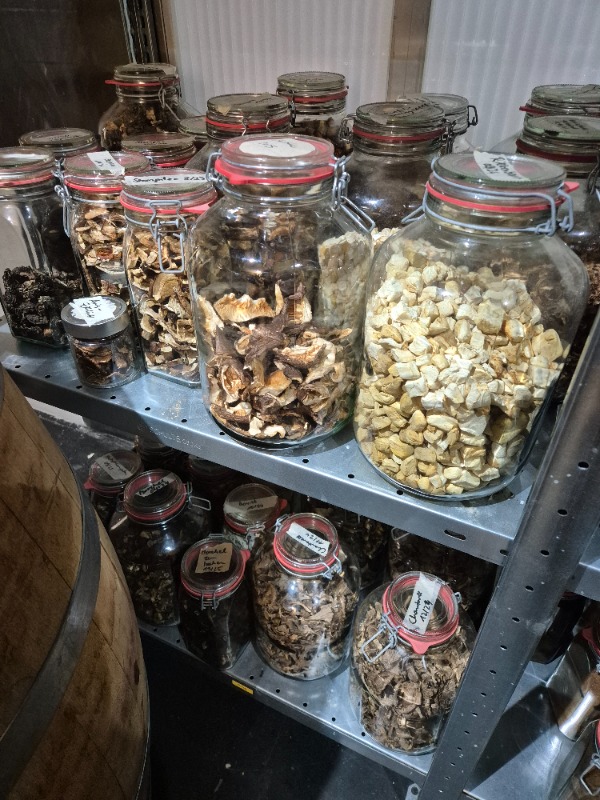
Privileged: Herr Schneider's Aroma Library
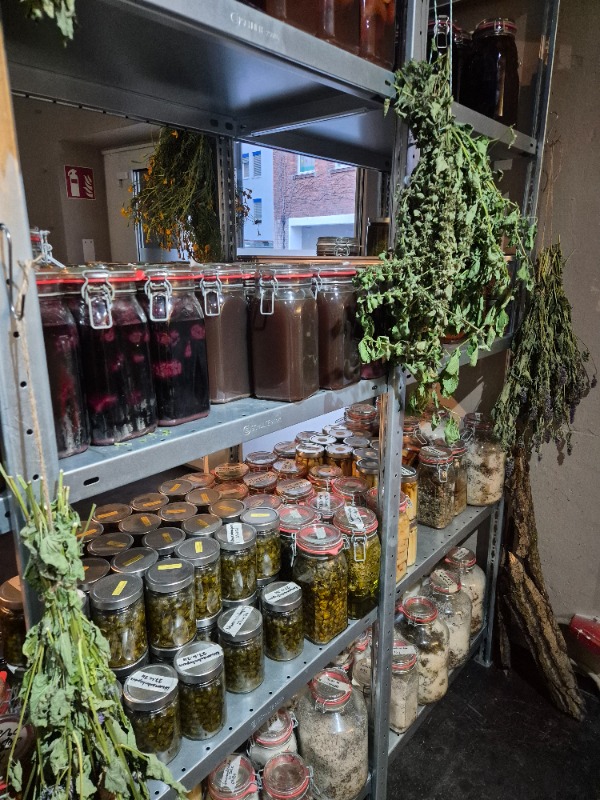
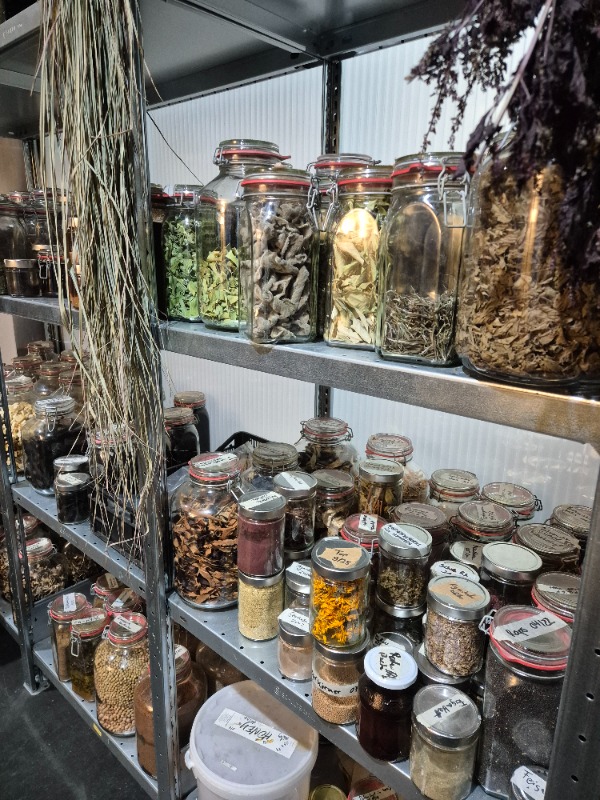
What becomes immediately apparent is the extraordinary skill of Schneider's team in foraging and sourcing ingredients from the Franconian landscape. The dedication to foraging is not merely a fashionable nod to seasonality but rather a fundamental pillar of the restaurant's identity. The team's intimate knowledge of local ecosystems—from the ancient forests of the Steigerwald to the fertile fields of the Knoblauchsland—allows them to assemble a remarkable array of ingredients that speak genuinely of place and time. It's this foraging expertise that underpins everything that follows, transforming what might otherwise be a collection of interesting dishes into a coherent exploration of Northern Bavaria's natural bounty.
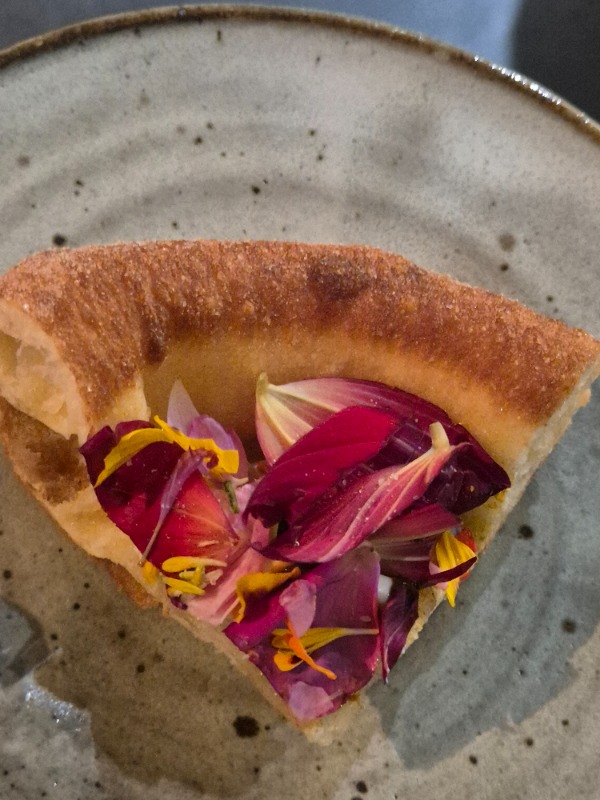
A traditional Fasching pastry
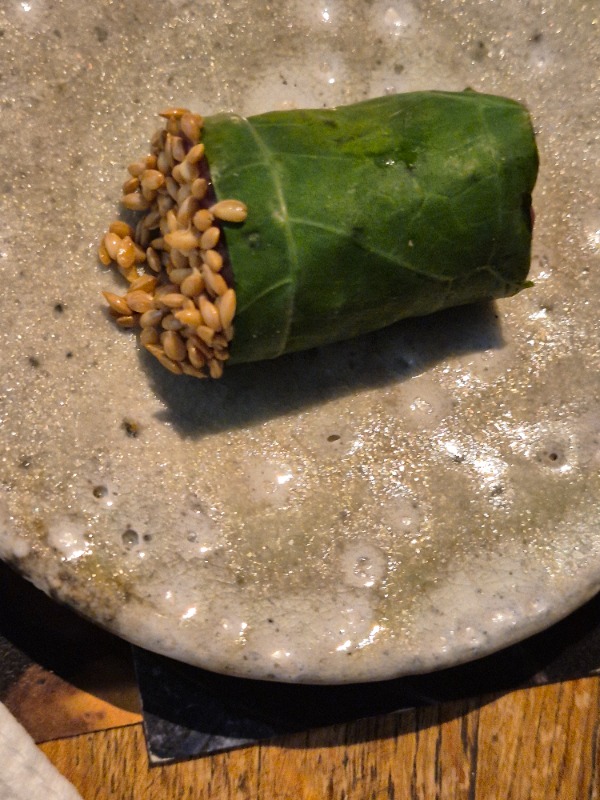
Wild boar tartare
Or so I hoped.
Now properly orientated, we made our way across the courtyard to the main dining room. The welcoming team guided each party to their table with quiet efficiency, and I was pleased to note that thought had been given to pairing me with a host who spoke impeccable English. What I hadn't anticipated, however, was the presence of a dog—a couple had brought their pet along for the evening. At an establishment of this calibre, one might reasonably expect a pet-free environment; allergies aside, not everyone wishes to share their special occasion with someone else's animal. Still, some consolation could be found in the fact that the couple had been seated towards the rear of the restaurant, thoughtfully positioned away from the central action.
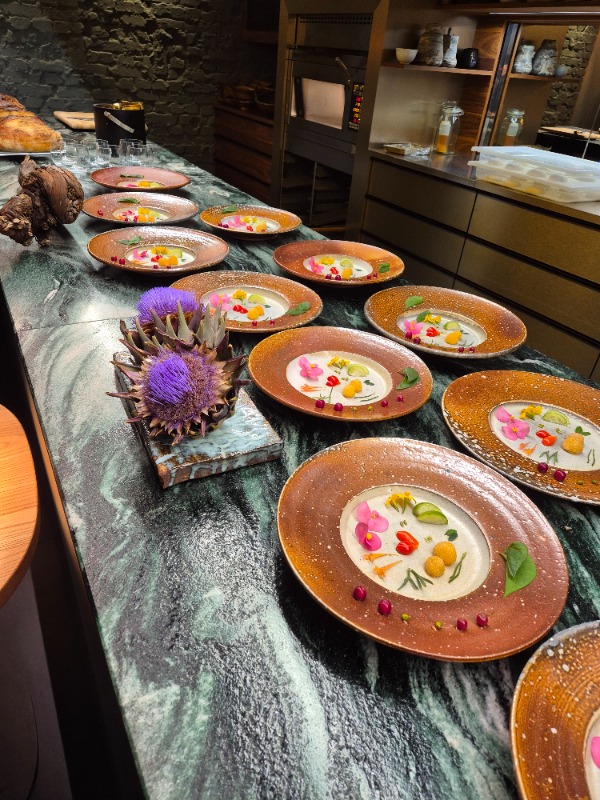
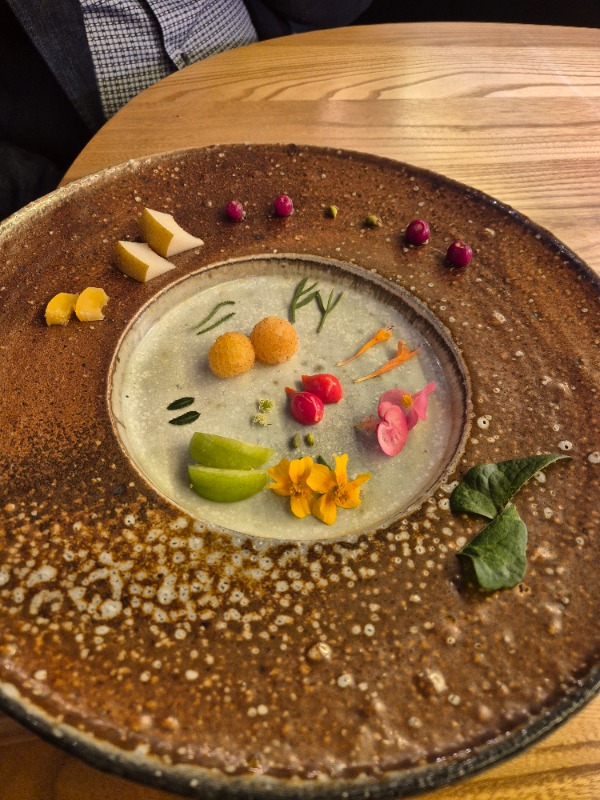
Sammelsurium
It prompted me to think differently about landscape—and for the German guests, I suspect, it served as an opening statement showcasing Northern Bavaria's rich culinary tapestry: fruit orchards and vegetable fields cultivated for centuries, valleys dotted with fish farms, ancient forests, urban textures, and hillside vineyards. Intellectually engaging, certainly, though one did wonder whether the plate delivered quite as much pleasure as it did provocation.
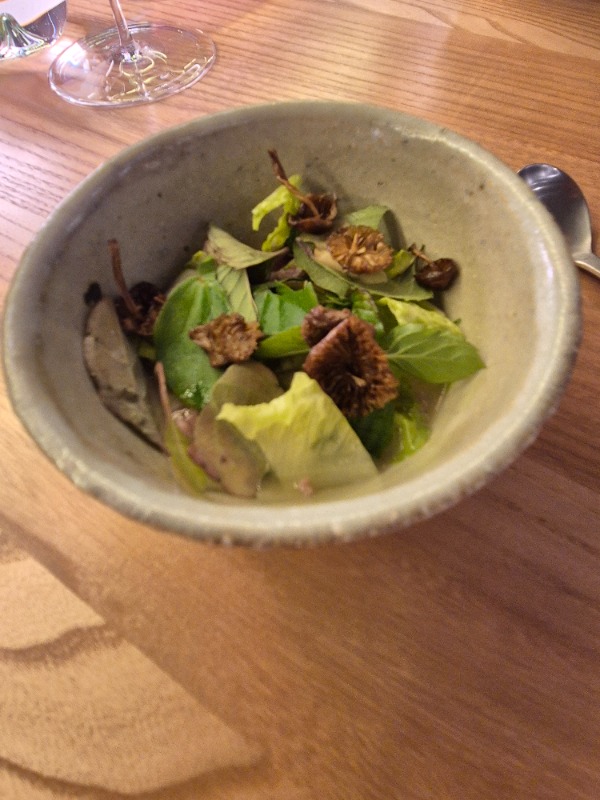
Chicken innards,
It was time for a new chapter: the Brotzeit, which also marked the beginning of the wine pairings. This opened with a Franconian Rotbier—roasted malt with milk-sour starter, presented in a traditional tankard. I enjoy good beer, but with this particular course, it felt rather heavy and overwhelming rather than complementary.
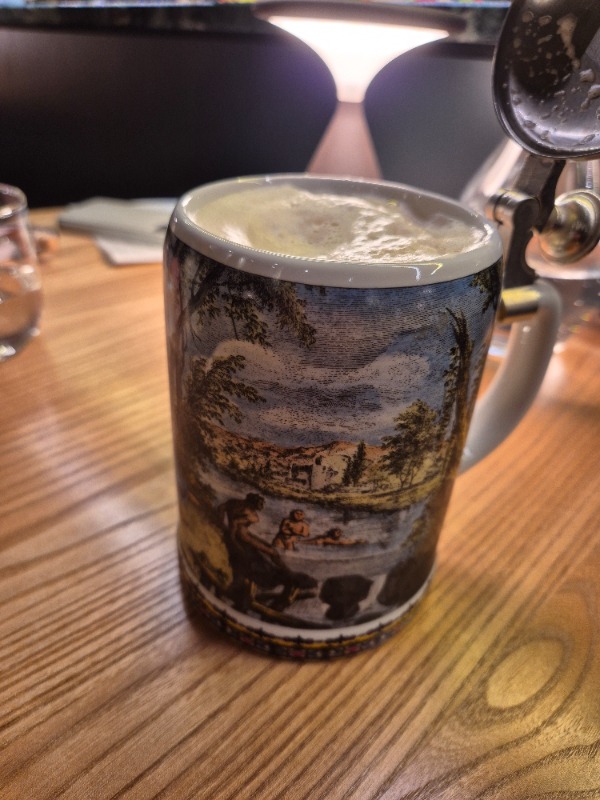
Franconian Rotbier
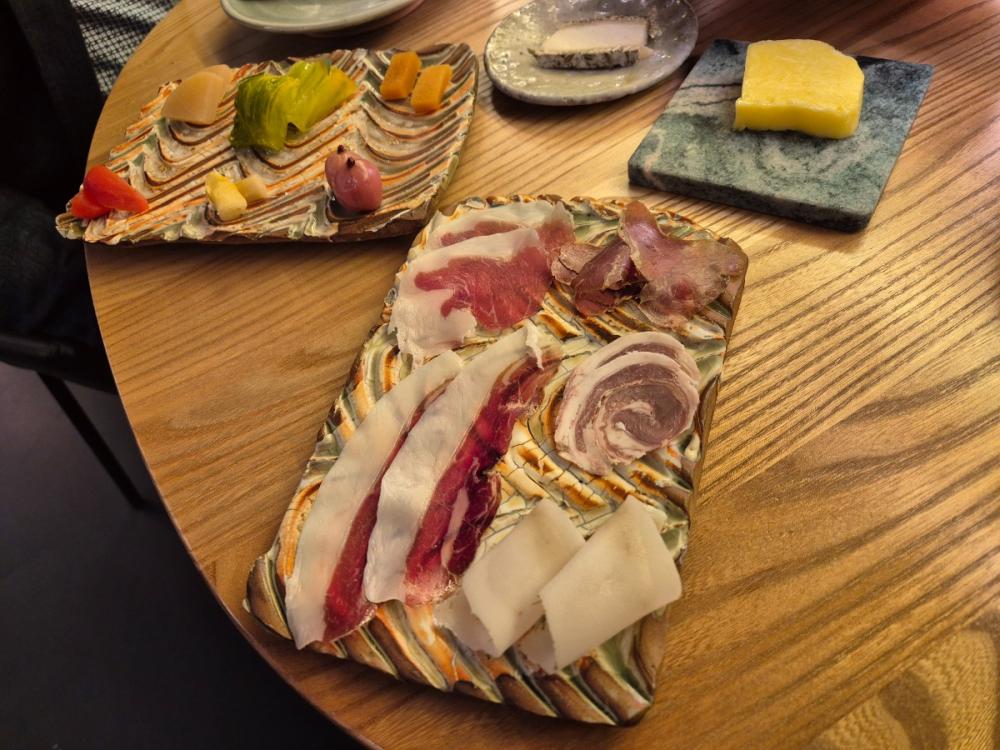
An impressive charcuterie board
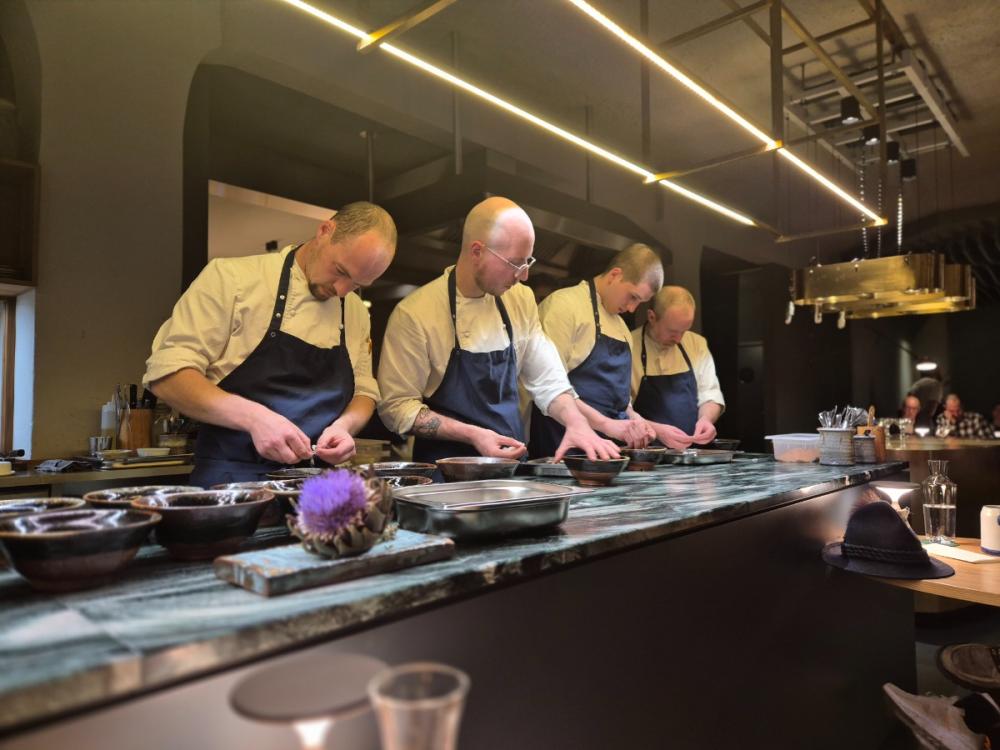
Many chefs make light work
The trout goulash that followed was sourced from local lakes in the Oberpfalz and presented raw and marinated with a pepper-fish jus, sour cream, roasted pepper, grilled salad with a dill marinade, and traditional goulash spices. Fiery red in colour, it offered a delicious sweetness and was perfectly textured—one of the standout dishes of the night, demonstrating just how thoughtfully the curated menu could come together when all the elements aligned. The second wine, a 2018 Silvaner 'Indigenius' from Weingut Manfred Rothe, provided a lovely zest and spiciness, developing beautifully in the glass. It felt like the most quintessentially Franconian wine of the evening, and the restaurant seemed to be delivering on every one of Schneider's lofty promises.
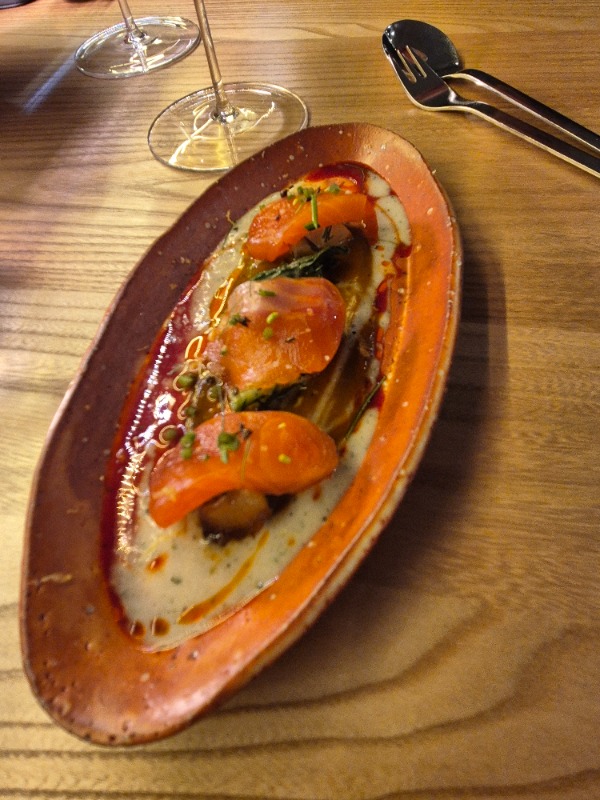
Trout goulash
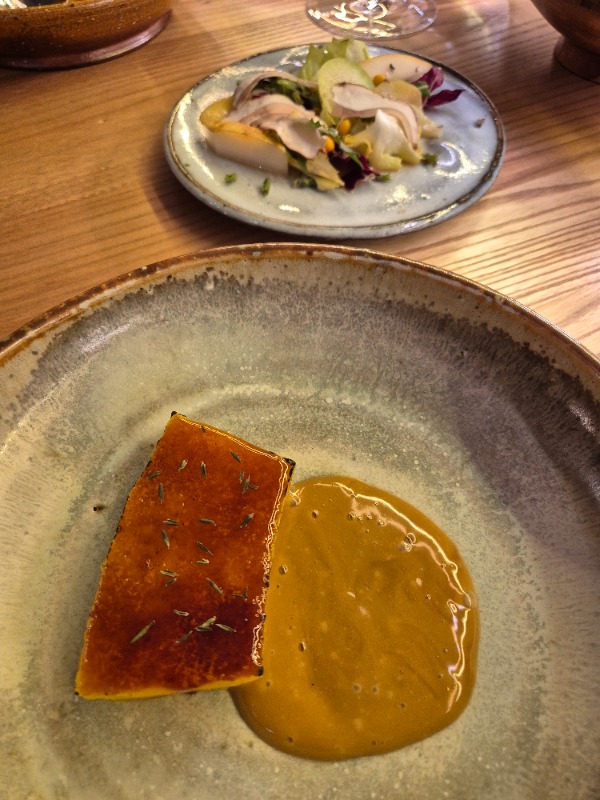
A seasonal pumpkin brûlée
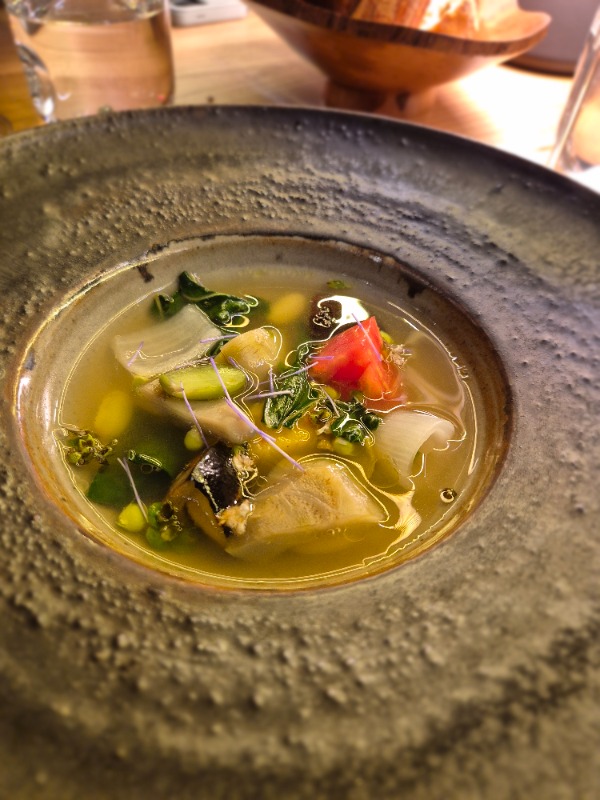
Vegetable Soup
A vegetable soup was next on this cornucopia of gastronomy, composed of produce from the Knoblauchsland: an infusion featuring a variety of beans, artichokes, onions, tomatoes, and mushrooms, finished with basil flowers and green currant leaf oil. The aroma was lovely, and the delicately placed vegetables made for a visually appealing dish—the preparation itself was fascinating to watch unfold. The third wine, a 2015 Silvaner 'Freigeist' from Ilmbacher Hof, proved an elegant companion: soft, calm, and quietly assured.
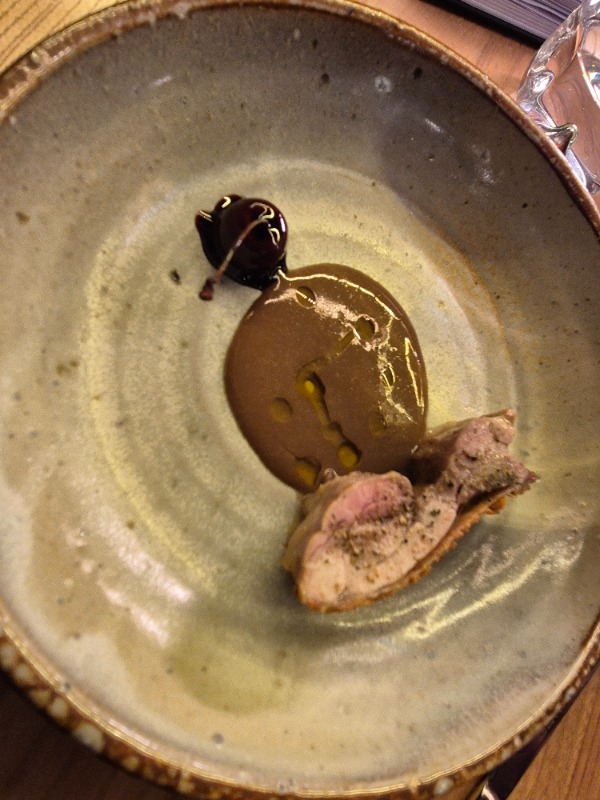
Chicken and Hay'
The fourth wine was a Chardonnay, Pouilly-Fuissé 'La Croix' from Domaine Robert-Denogent—a strong, characterful pour from old vines that held its own admirably. Time was moving on, and the experience had now stretched into its fourth hour. There's nothing inherently wrong with that, except that the theatre of having the team cook and prepare food in full view of the dining room didn't add quite as much to the experience as one might have hoped. Many diners had turned their attention to conversation rather than the culinary performance unfolding before them, suggesting that perhaps the concept worked better in theory than in practice.
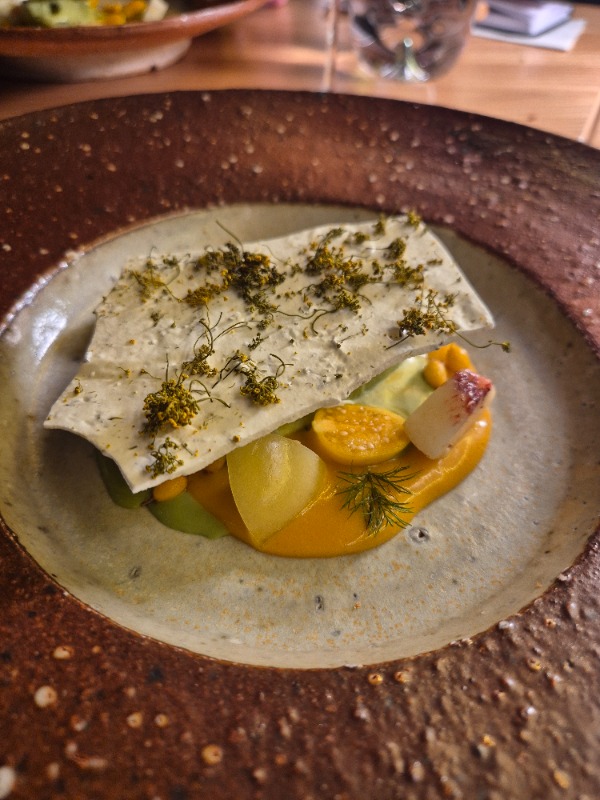
Sea Buckthorn in Paradise
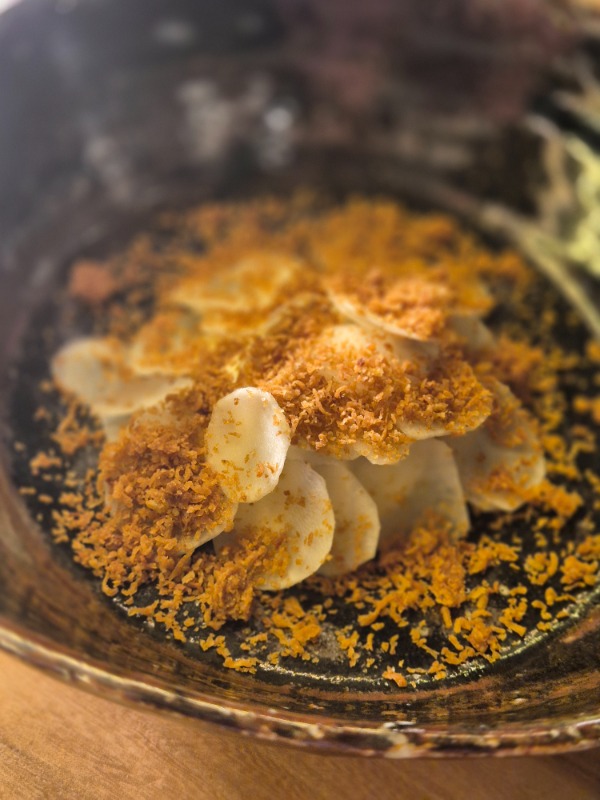
Thinking of a Coconut Macaroon'
The final official dish of the evening proved to be the pièce de résistance and was genuinely delightful: 'Sea Buckthorn in Paradise', featuring dill ice cream with dill flower meringue, sea buckthorn butter caramel, and fruits from the nightshade family.
This was a glorious conclusion—white peach mingling with the green of the dill used for the ice cream, topped with delicate flowers. Accompanying it was the last of the alcoholic wine pairings, a 2019 Blanc de Blancs Prestige from Sektkellerei Höfler, which matched the dish beautifully. (For those travelling in Germany, Sekt is the local answer to Prosecco—a sparkling wine well worth exploring).
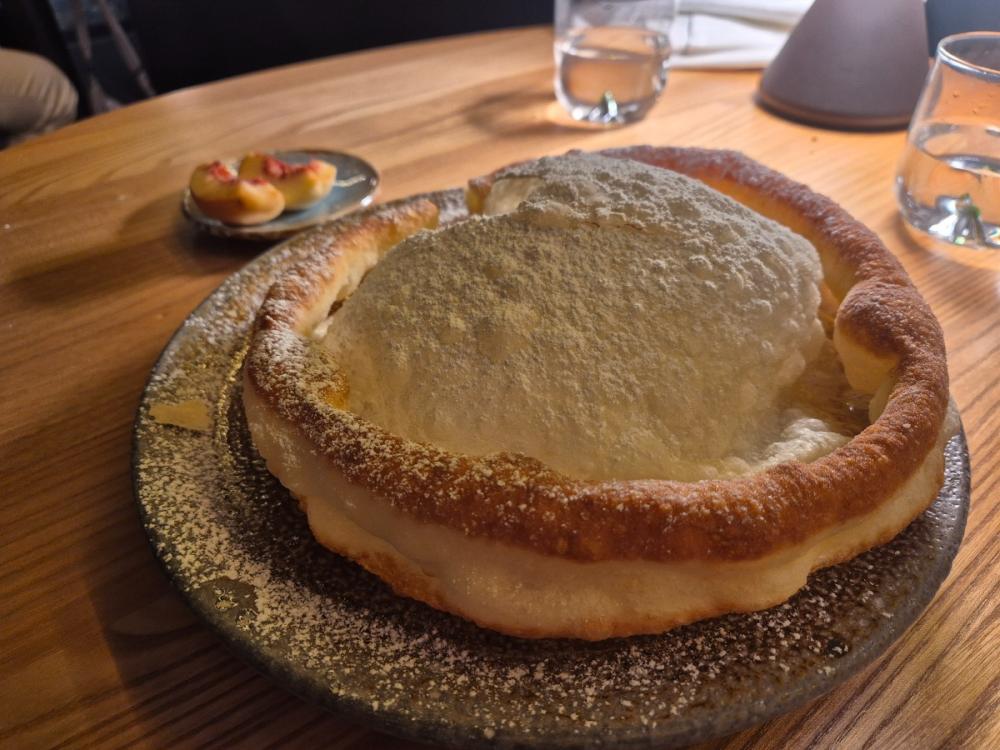
A final surprise
Herr Schneider's foraging exploration is undeniably dynamic; his vision to reshape our appreciation for ingredients is both ambitious and admirable. There are moments of genuine brilliance here—the trout goulash, the pumpkin brûlée, that final sea buckthorn dessert—where philosophy and flavour align perfectly. Yet some elements do get lost along the way, a not uncommon challenge amongst Michelin-starred establishments where lofty concept occasionally outpaces consistent execution.
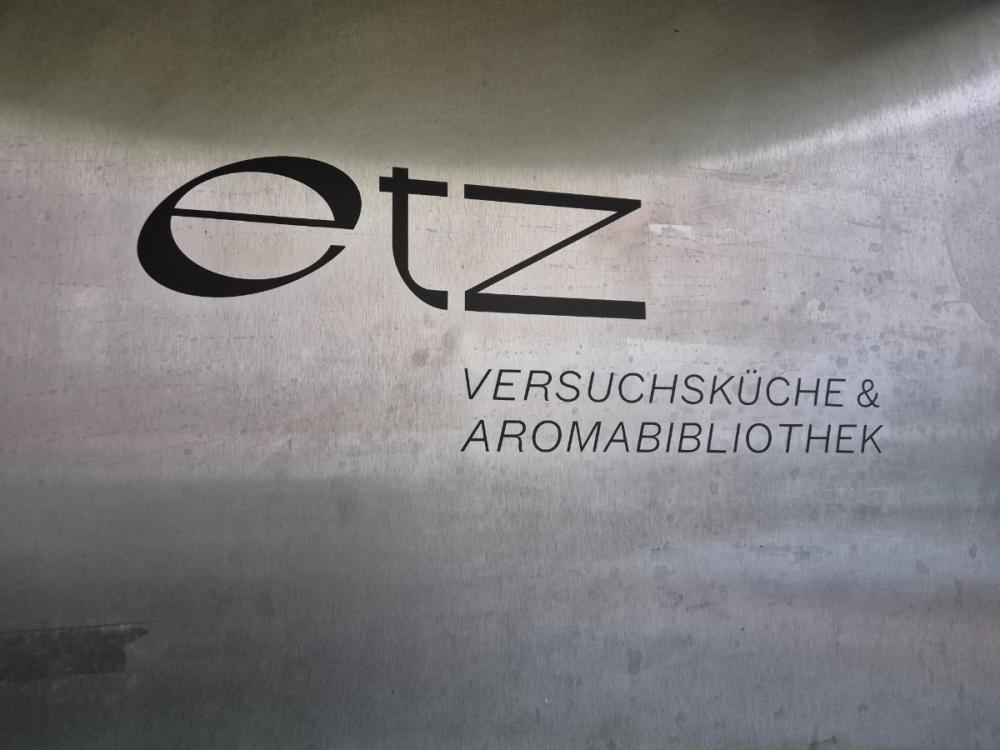
The challenge, of course, is finding it in the first place.
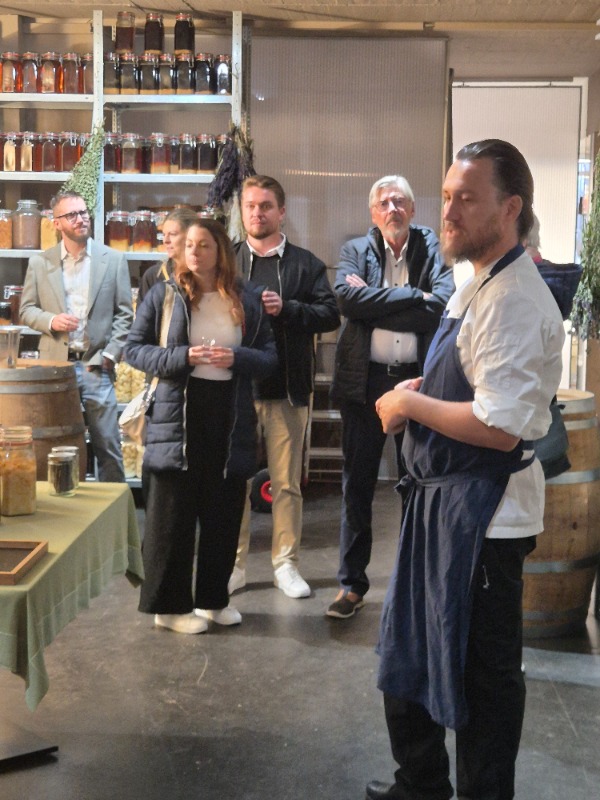
Herr Schneider
Wiesentalstr.41
90419 Nürnberg
Karte
+49-911-47712809 (Mi-Sa)
etz@etzrestaurant.de
Also by Andrew Palmer...
A Journey Through Playtime: The Enchanting Nuremberg Toy MuseumClassical Music: I Have Lived And Loved Vaughan Williams And FriendsClassical Music: Ralph Vaughan Williams MantegnaClassical Music: Bliss: Miracle in the Gorbals; Metamorphic Variations Playing To Win: How One Hotel Manager Transformed A Nuremberg Property Into The City's Most Enchanting StayMore in this series...
Dining Out: Where Fire Meets Flavour: The Banksia Burns BrightBeyond The Buzz: Uyare Delivers Substance Over Social Media SpectacleFine Dining: Polidor - Where True Culinary Stars Shine Beyond Michelin's GazeFrom Village Pub To Culinary Destination: The White Swan Soars AgainFine Dining: What A Find! York's The Old Liquor StoreFine Dining In Germany At Jøwåy In NurembergFine Dining: A Nirvana In The North Yorkshire Moors - The Owl, HawnbyFine Dining: Rhubarb Opens In HarrogateFine Dining: Herring for Dessert!Dining Out: The Wild Swan, MinskipDining Out: The Whippet Inn YorkThe General Tarleton Stealing A March As A Go To Dining ExperienceDining Out: Three's A CrowdFine Dining: The White Horse & Griffin, WhitbyWeekend Dining: The Black Bull SedberghWeekend Dining: The Crown Inn At Roecliffe, BoroughbridgeWeekend Dining: The Three Fishes At MittonWeekend Dining: Fishing For Compliments – No Problem – A Superb ExperienceWeekend Dining: The Pine Marten A Good Choice For Dinner